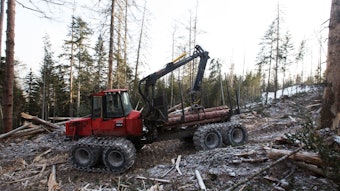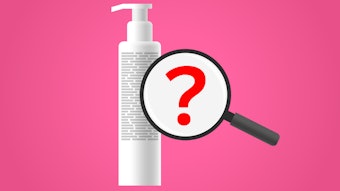Substances occurring in nature are exempt from registration, evaluation and downstream user obligations [Article 2(7)(a) and Annex V (7/8)] if they are not chemically modified or classified as dangerous, according to the Directive on Dangerous Substances 67/548/EEC.
Naturals, according to REACH, are defined in Article 3(39) as: Naturally occurring substances that are, as such, unprocessed or processed only by manual, mechanical or gravitational means; by dissolution in water; by flotation; by extraction with water; by steam distillation or by heating solely to remove water; or that are extracted from air by any means."
The position of the cosmetics industry in Europe, discussed at an association’s level, is the following:
- Aqueous plant extracts are exempt from registration, evaluation and downstream user obligations (Titles II, V & VI)
- Plant extracts from a solvent extraction (with glycerin, glycol, oil or alcohol, etc.) fall under REACH. They represent preparations, consisting of a solvent-free plant residue (UVCB), the solvent and potentially other additives, e.g. preservatives. A UVCB is a substance of unknown or variable composition, complex reaction products or biological materials. All components of the preparation have to be registered when exceeding the volume of one ton per year. For pre-registration, the specific EINECS numbers should be used and if not available, the general numbers for naturally occurring substances should be used (EINECS 310-127-6/CAS 999999-99-4).
- Pressed or pressed and refined fatty oils are exempt from REACH, provided they are not chemically modified or classified as dangerous.
- Nonaqueous solvent extracted fatty oils fall under REACH as UVCBs. For pre-registration, the specific EINECS number should be used and if not available, the general numbers for vegetable oils should be used: EINECS 273-313-5/CAS 68956-68-3.
Borderline cases exist. For example, wool wax (lanolin) is considered a natural when it is obtained from a process as described in Article 3(39)-REACH (see above). This includes the flotation process where detergents are used, according to a decision by the EU.
The considerations for further natural substance classes within REACH are complex:
- Protein derivatives are considered as naturals when extracted without solvents other than water or obtained from mechanical processes. They can be native proteins even if they have undergone a chemical treatment, such as the removal of impurities, so long as the chemical structure remains unchanged. In this case, the protein is exempt from REACH.
- Protein hydrolysates are considered UVCBs and must be pre-registered. A general EINECS number for protein hydrolysates is: 310-296-6/CAS 9015-54-7.
- Amino acids are usually obtained either from protein hydrolysis or another chemical modification process and as such, they fall under REACH.
- Biotechnology-derived products used as cosmetic ingredients can be polymers, regular substances or hydrolysates and are considered as UVCBs. The biotechnological process is a modification of the initial substrate and as such, the products fall under the respective REACH provisions.
The REACH approach for natural polymers is still open for decision by the EU-Commission. Questions include: Are they exempt as polymers? And in relation, what monomers are to be registered? Or, are natural polymers only exempt when listed in Annex IV? The actual entries in Annex IV are also under review for inclusion or deletion. Consequently, the reviewed annexes have to be studied before pre-registration.
Other classes of natural substances are exempt from the provisions of REACH, according to Annex V(8). These include minerals and ores,such as mica, if they are not chemically modified.
Annelie Struessmann, PhD
CONUSBAT
Aachen, Germany
*Readers are reminded that the text of the REACH Regulation (EC) No 1907/2006 is the only authentic legal reference. The information in this column does not constitute legal advice.
Key Summary:
• Substances occurring in nature are exempt from registration, evaluation and downstream user obligations
• This includes naturals only if they have not been chemically modified or classified as dangerous
• The solvent allowed for processing of naturals is exclusively water
• In flotation processes, addition of detergents is possible
• Plant extracts from nonaqueous extraction solvents fall under REACH
• Proteins are naturals when they are not chemically-modified during extraction or purification
• Protein hydrolysates, amino acids and biotechnology-derived products are developed from modifications of initial substrates and thus fall under REACH.
• Minerals are exempt from REACH if they are not chemically modified
Next month’s topic: Practical Steps to Pre-registration
Do you have further questions? Visit C&T magazine's online REACH Round Table.
Further Useful Information
REACH Workshop, April 14, 2008, EC and ECHA, Brussels
Results will be presented in the C&T Today's April e-newsletter. The workshop will be streamed live and the link will be provided the day before the event: http://ec.europa.eu/enterprise/reach/events_en.htm. Webstreaming on demand will made available after the event. Contact: DG Enterprise and Industry, 'REACH' Unit
New Guidance Documents on REACH: http://reach.jrc.it/ Updated guidance document for monomers and polymers (March 26, 2008)
IUCLID 5—Pre-registration plug-in available since March 26, 2008: http://ecbwbiu5.jrc.it/index.php?fuseaction=home.preregistrationplugin&type=public
EINECS/ELINCS References - ESIS (European Chemical Substances Information System): http://ecb.jrc.it/esis/index.php?PGM=ein










